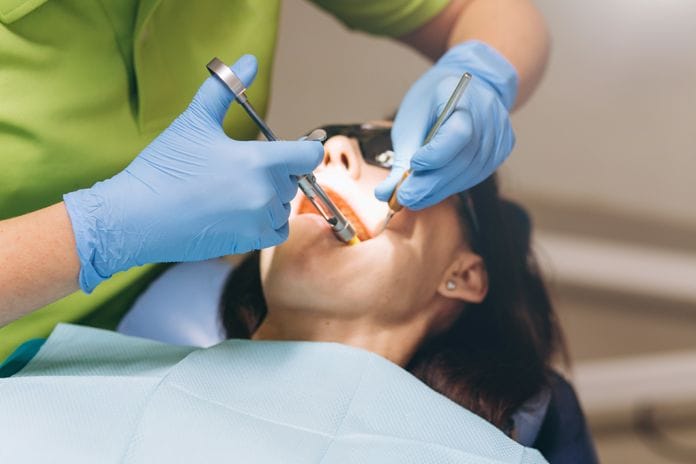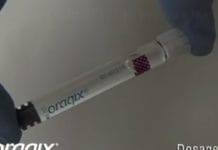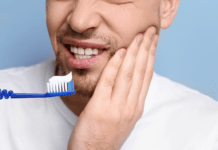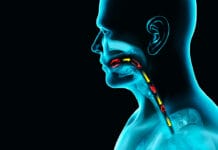Effective anesthesia does not have to be a source of anxiety for patients or practitioners. Most of us dread the mandibular inferior alveolar nerve block (MIANB) and will try anything to avoid giving this injection. I am one of those practitioners who have explored other options to achieve pain-free anesthesia and pain-free periodontal treatment.
When I was learning to give the MIANB, we had the joy of practicing the injection on each other. One of the women in my group hit the parotid gland of another woman and caused paresthesia. Then and there, I knew this was not my favorite injection and dreaded giving it every single time. I would rather give six maxillary injections than one MIANB.
Hello Mental Nerve Block
The mental nerve block (infiltration technique) for bicuspid to bicuspid mandibular anesthesia, which occasionally catches the mandibular first molars as an added benefit, is my go-to technique. Using buccal infiltration as needed for second molar anesthesia makes mandibular anesthesia a no-fuss, no-worry procedure.
Preferred Anesthetic
Per employer recommendation, I have been using 4% Citanest Plain (approximately a fourth of a carpule), which is non-acidic and acts as a leader for 4% Septocaine with epinephrine 1:200,000 (approximately half of a carpule).
This technique minimizes the epinephrine and seems to be very effective. After doing some research, however, I realized that there are better and more popular options than what I was familiar with.
The Survey Says…
I started with a simple survey where I asked members of an online dental group what their preferred anesthesia for mandibular infiltration is. The results were as follows (Mind you, this was just a one-day survey).
- Five said 4% Septocaine (articaine) with epinephrine 1:00,000
- Two said 2% lidocaine with epinephrine 1:100,000
- One said topical benzocaine (lives in North Carolina where hygienists are not allowed to anesthetize)
- And one, mad face emoji (given by a dentist)
Research Says…
Obviously, I had to dig deeper for more detailed information, so I researched The Journal of American Dental Association (JADA). According to JADA’s research, the mandibular infiltration technique is effective in anesthetizing mandibular incisors using 4% articaine with 1:100,000 epinephrine as the preferred solution over 2% lidocaine with 1:100,000 epinephrine.1
Injection Site
Using the mental nerve as the location for the site of injection of 1.8ml 4% articaine with epi 1:100,000 will achieve bicuspid to midline anesthesia. Depending on the anatomical location of the mental foramen, 1st molar anesthesia may be obtained as well.
The mental foramen is typically found adjacent to the root of the mandibular premolar and may deviate between the apices of the 1st premolar and the 1st molar. It helps to have a panorex image up of the patient for the definitive location of the mental foramen. For advanced periodontal cases where the mandibular incisors are compromised with dentinal sensitivity, incisive nerve infiltration, as well as infiltration of a few drops of 4% articaine to the lingual of #24 and #25, will give both you and your patient great comfort.
What about the 1st and 2nd Molars?
In addition to the mental nerve infiltration block, I have had great success by simply adding a few drops of 4% articaine with epi 1:100,000 as a buccal infiltration distobuccal to the 2nd molar. This achieves tissue, not pulpal anesthesia, but with the addition of topical agents, it seems to be a crowd-pleaser.
Allergy Claims
What do you do when a patient claims, “I’m allergic to Novocaine!” Any anesthetic agent is called “Novocaine” by many patients, similar to how “Kleenex” is used in reference to all tissues. It is important to ask what their symptoms were that makes them think they may be allergic to “Novocaine.” Did they get an elevated heart rate, or did they get swelling?
Most likely, they are sensitive to the epinephrine rush. This is where using 4% Citanest plain followed by 4% articaine with epinephrine 1:200,000 may be a better choice of anesthesia as less epinephrine is used to achieve anesthesia.
Let’s Talk Layering
Backing up a bit, it is critical to make your patient comfortable prior to anesthesia. If they are nervous, using nitrous oxide will aid in relaxation. When the patient is relaxed, anesthesia becomes simpler and does not become a cause of dental anxieties for future visits.
I always layer the injection site(s) with a combination of 18% benzocaine and Cetacaine spray. First, rub a small amount of 18% benzo in area of the injection site with a cotton tip applicator, wipe off after 60 seconds, then spray with a small amount of Cetacaine, drive Cetacaine into the tissue with air for a few seconds, rinse, gauze dry, and inject.
Most patients literally will not even feel the injection. Inject slowly, blocking the path of the needle with drops of anesthesia along the way makes for pain-free injections.
Health History
Always check the patient’s health history for drug sensitivities and know what is in your anesthetics. Take your patient’s blood pressure prior to anesthetizing them. If it is a little high, nitrous oxide may relax them enough to bring it down. If it is too high, and the nitrous does not help bring it down, please reschedule them and advise them to seek medical attention.
Always Use Caution When Handling Needles
Use the scoop technique to recap your syringe, or purchase a needle capper. Never cap the needle with the opposite hand.
Editor’s note: Anesthesia choices should be individualized according to medical history and patient needs, and the treating clinician is ultimately responsible for choosing the correct plan for anesthesia.
Now Check Out the Peer-Reviewed, Self-Study CE Courses from Today’s RDH!
Listen to the Today’s RDH Dental Hygiene Podcast Below:
Reference
1. Meechan, J. The Use of the Mandibular Infiltration Technique in Adults. The Journal of the American Dental Association. September 2011; 142(3): 19S-24S. Retrieved from https://jada.ada.org/article/S0002-8177(14)63751-X/fulltext












